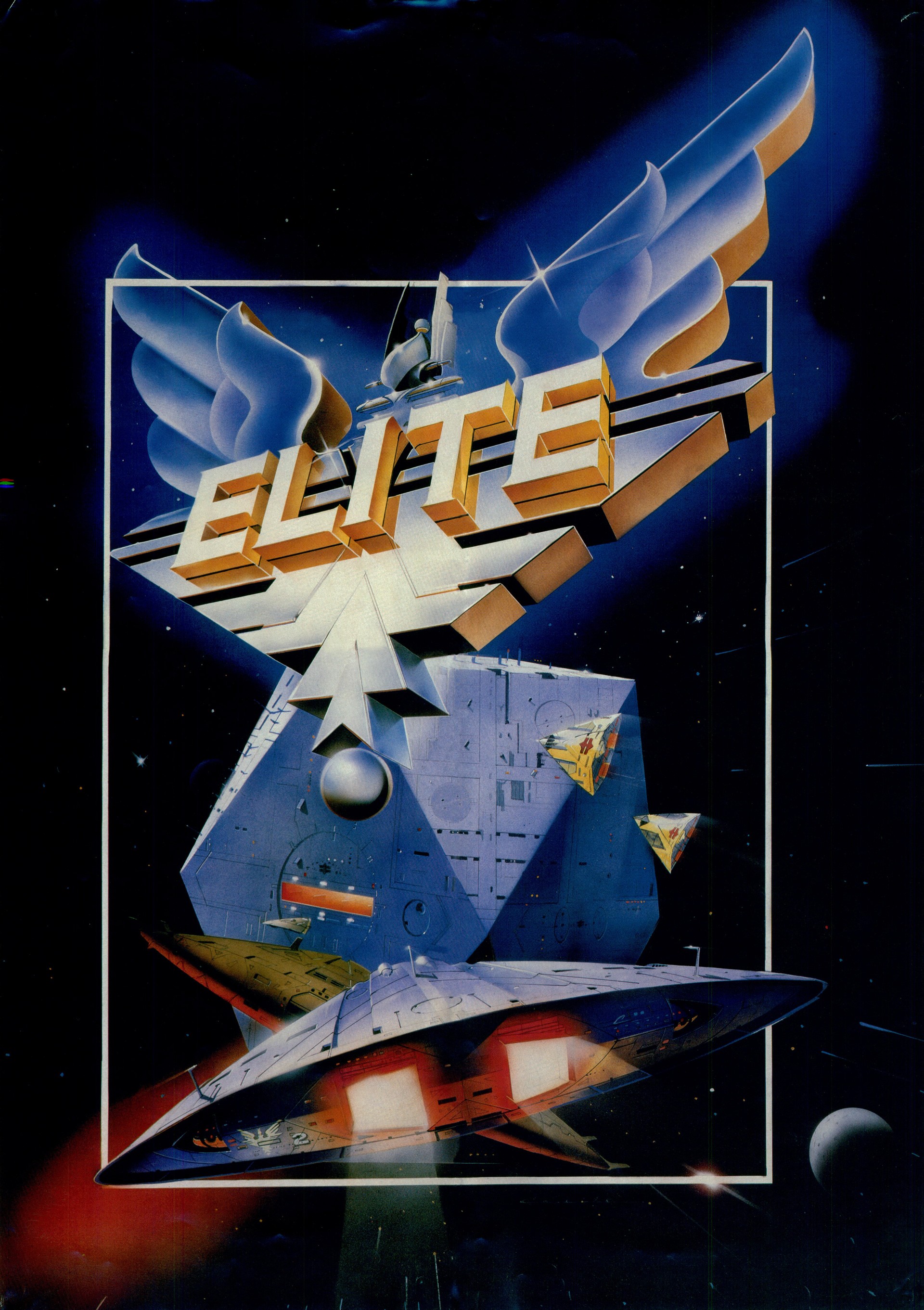Elite was very popular and it had a very large following.
Elite is a space trading video game. It was written and developed by David Braben and Ian Bell and originally published by Acornsoft for the BBC Micro and Acorn Electron computers in September 1984.
Elite's open-ended game model, and revolutionary 3D graphics led to it being ported to virtually every contemporary home computer system and earned it a place as a classic and a genre maker in gaming history. The game's title derives from one of the player's goals of raising their combat rating to the exalted heights of "Elite".
Elite was one of the first home computer games to use wire-frame 3D graphics with hidden-line removal. It added graphics and twitch gameplay aspects to the genre established by the 1974 game
Star Trader. Another novelty was the inclusion of
The Dark Wheel, a novella by Robert Holdstock which gave players insight into the moral and legal codes to which they might aspire.
The
Elite series is among the longest-running video game franchises. The first game was followed by the sequels
Frontier: Elite II in 1993, and
Frontier: First Encounters in 1995, which introduced Newtonian physics, realistic star systems and seamless freeform planetary landings. A third sequel,
Elite Dangerous, began crowdfunding in 2012 and was launched on 16 December 2014, following a period of semi-open testing; it received a paid-for expansion season,
Horizons, on 15 December 2015.
Elite proved hugely influential, serving as a model for other games including
Wing Commander: Privateer,
Grand Theft Auto,
EVE Online,
Freelancer, the
X series and
No Man's Sky.
The player initially controls the character "Commander Jameson", though the name can be changed each time the game is saved. The player starts at Lave Station with 100 credits and a lightly armed trading ship, a Cobra Mark III. Most of the ships that the player encounters are similarly named after snakes or other reptiles. Credits can be accumulated through a number of means. These include piracy, trade, military missions, bounty hunting and asteroid mining. The money generated by these enterprises allows the player to upgrade their ship with enhancements such as better weapons, increased cargo capacity, an automated docking system, an extra energy bank and more.
In the game universe, stars have single planets, each with a space station in its orbit. Stars are always separated by interstellar distances which cannot be crossed using the ship's sublight engines. Travel between stars is accomplished by hyperspace jumps, and is constrained to those within range of the limited fuel capacity (a maximum of 7 light years) of the ship's hyperdrive. Sublight travel uses no fuel.
Fuel can be replenished after docking with a space station, which requires matching the ship's rotation to that of the station before entering the docking bay
[20] - a task that can be avoided by purchasing a docking computer. Equipment upgrades include a fuel scoop, which allows "sun skimming" - collecting energy from the stars'
corona[23] - described by the manual as "a dangerous and difficult activity", but in practice a fairly simple process far easier than manually docking at a space station—and collecting free-floating cargo canisters and escape capsules liberated after the destruction of other ships.
[24]










